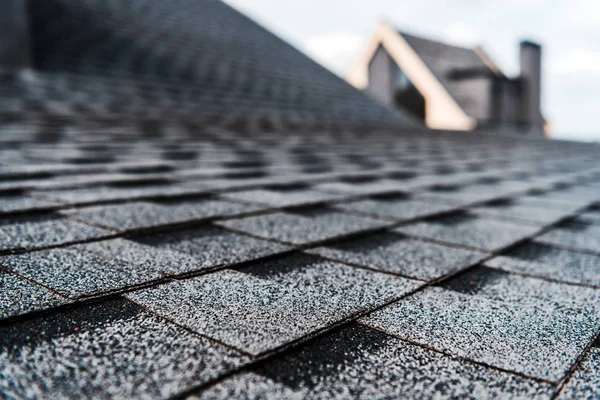When most people think of green roofs they envision a rooftop garden but a green roof can be much more than just plants.
Eco-friendly shingles act as an energy efficient insulator which lowers your cooling costs and can reduce your carbon footprint. They are also smog-reducing thanks to copper coated granules that absorb and release harmful air pollutants.
CRS Roofing excels in Portland, installing quality shingles for your roofing needs visit the CRS website your top choice for excellence.
1. Lower Carbon Footprint
One of the first things homeowners look at when building green homes is their roofing. Traditional asphalt shingles aren’t the best eco-friendly option since they reflect heat back into the environment and increase cooling costs. However, there are several ways to offset their impact.
For instance, shingle recycling programs and stricter regulations have reduced manufacturing emissions. Additionally, shingles that are lighter in color help to reduce the amount of heat they reflect.
Another alternative to traditional shingles is tile roofs which can last up to 100 years and are made from recycled materials. They also are cooler than other roofing options which can cut down on energy use. Finally, green roofs, or vegetated roofs, are a great way to reduce a building’s footprint these rooftops are covered with soil and can include a variety of plants, including succulents, moss, sedums and trees.
2. Less Waste
A lot of shingle waste ends up in landfills, where it takes over 300 years to decompose. However, if you choose a roofing material like wood that is harvested from trees that have been given the chance to regenerate this can be a very sustainable option.
Another eco-friendly choice is shingles made from recycled materials, such as rubber from old tires or plastics this keeps these non-biodegradable materials out of landfills, while also reducing the need to create new asphalt for road paving.
Green roofs can also reduce energy bills by acting as natural insulators in the winter and cooling the building in summer they can even absorb sound which can help to make a building more quiet and relaxing. However, it is important to consult a structural engineer before deciding on a green roof as it can be quite heavy and require regular maintenance.
3. Better Air Quality
Green roofs can significantly reduce energy costs, helping to lower carbon emissions and improve air quality. They also extend the lifespan of roofing materials and reduce noise pollution, as the soil mixture and plants absorb and deflect noise from outside.
Four in 10 Americans live in counties with unhealthy levels of ground-level ozone or outdoor air pollution, and this can lead to cardiovascular, respiratory and neurological problems.3
4. Reduced Water Pollution
The use of shingles made with recycled materials reduces the amount of toxic chemicals that are released into the environment during production. These materials also have a lower risk of leaching into the water system, as opposed to petroleum-based shingles.
The plants on a green roof filter out airborne pollutants by absorbing them and by trapping them in their leaves and stems. They also capture heavy metals which can contaminate water courses.
It is important to choose plant species that are suited to your climate. Most regions are divided into horticultural hardiness zones which help identify the best growing conditions for your green roof. Pre-cultivated vegetation blankets and drainage plates are used to ensure that a green roof will not be damaged by wind uplift.
5. Increased Home Value
Standard asphalt shingles are a moderately durable roofing option that offers some heat reflectivity and can be painted to create a cool roof. However, they’re a petroleum and fiberglass product that can create air pollutants during their manufacturing.
A green roof, which can be covered with grass, flowers and shrubs is another sustainable roofing option. It helps reduce a home’s energy costs by acting as insulation during the winter and a cooling shade during the summer.
If you have a premium shingle that replicates the look of a slate roof it can increase your home’s value if you live in an area where buyers expect that level of luxury. Keep in mind, though that a roof covering like this may require insurance and can add significant weight to your home.


